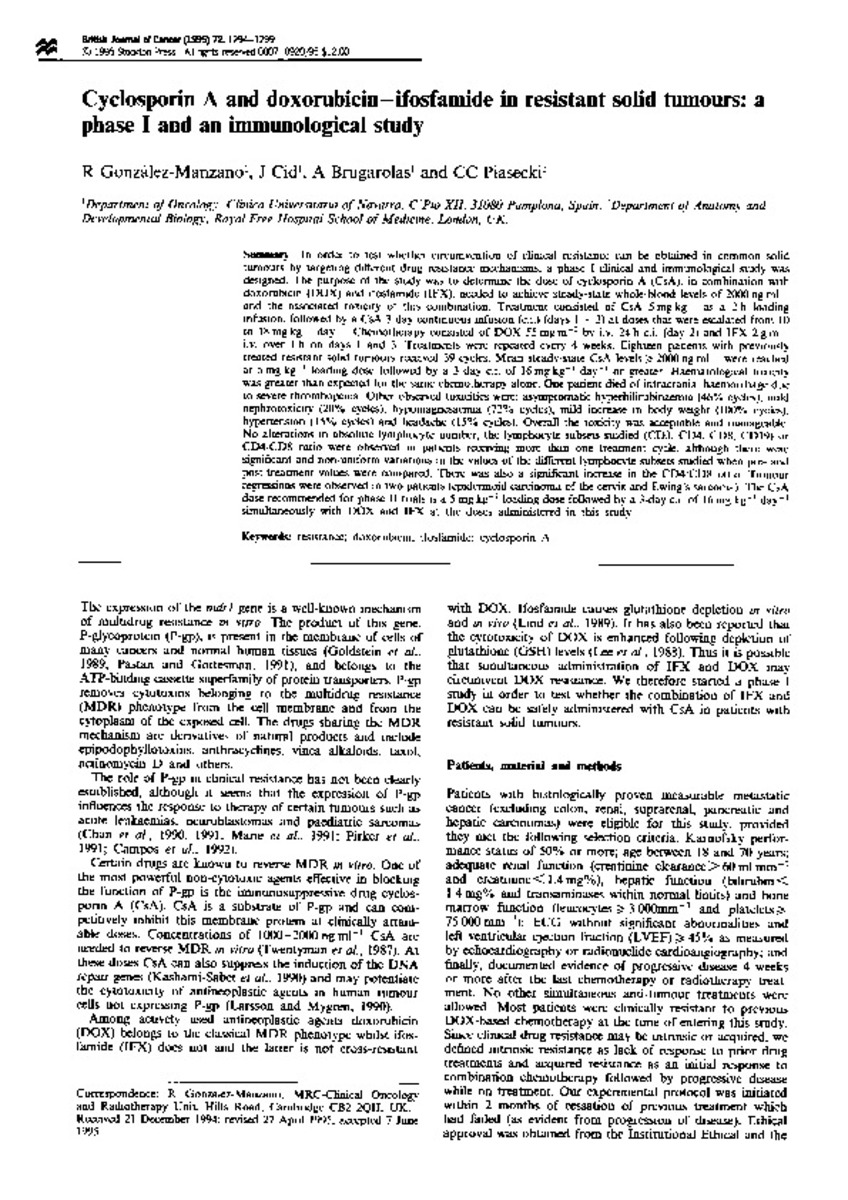Cyclosporin A and doxorubicin-ifosfamide in resistant solid tumours: a phase I and an immunological study
Keywords:
Antineoplastic Combined Chemotherapy Protocols/adverse effects/pharmacokinetics/therapeutic use
Drug Resistance, Neoplasm
Lymphocyte Subsets/drug effects
Citation:
Gonzalez-Manzano R, Cid J, Brugarolas A, Piasecki CC. Cyclosporin A and doxorubicin-ifosfamide in resistant solid tumours: a phase I and an immunological study. Br J Cancer 1995 Nov;72(5):1294-1299.
Statistics and impact
0 citas en

0 citas en

Items in Dadun are protected by copyright, with all rights reserved, unless otherwise indicated.







